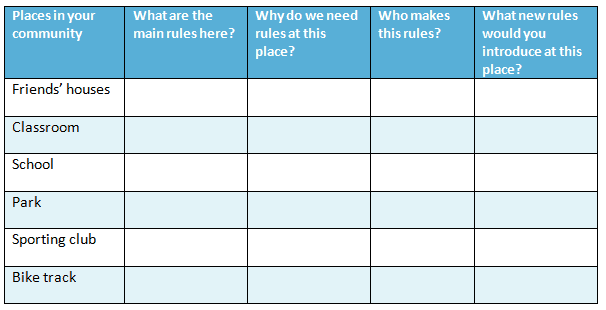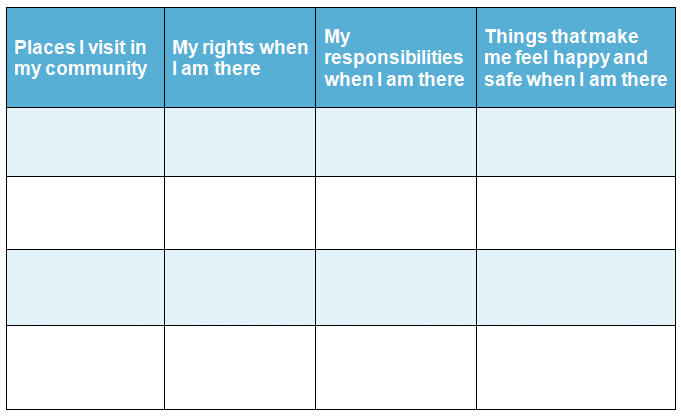Information for Teachers
Curriculum links
This investigation is linked to the following C3 Social Studies Standards for Grades 3–5.
D2.Civ.4.3-5. Explain how groups of people make rules to create responsibilities and protect freedoms.
D2.Civ.11.3-5. Compare procedures for making decisions in a variety of settings, including classroom, school, government, and society.
How to search the internet
1 Keep your request short
Fewer words will give a more accurate search.
2 Choose exactly what you want
For example: Arctic Circle Climate
3 Use quotes
Double quotes around a set of words tell the search engine to consider those exact words in that exact order without any change. For example: “Arctic Circle Climate”
4 Use the plus sign (+)
If you add a plus sign (+) between words, the internet will search for all the words. For example: migrate+birds+whales+mammal
5 Use the minus sign (–) to say what you don’t want
Use a minus sign (–) to show words you do not want to appear in your results. For example: if you search for burrowing animals and do not want mammals in your search, –mammals will exclude mammals. Note that you need to put a space before the minus sign for the word to be excluded.
6 Be very clear about what you don’t want
Part 1
Ask questions and define problems
After reading My Neighborhood, you may have questions about the people and places that are a part of your community, and what makes these places safe, happy places to visit.
List your questions
- Compare your list with questions that others have.
- Choose a question you would like to investigate.
- You can work alone, with a partner, or in a small group.
You may want to choose one or more of these questions to investigate
Q1. What places do you visit in your neighborhood, what rights and responsibilities do you have when you are there, and who makes the rules at these places?
Q2. What aspect of your community would you like to do to improve? How might you do this?
Q3. What things make you feel safe, happy, and involved when you are at school, and in your local community?
Go to Part 2 Investigate →Part 2
Investigate
Helpful websites
You can search for information about your community by accessing websites about your local town or suburb, and local government.
You can talk with other people who are involved in the community such as teachers, the principal, parents, a sports coach, the town librarian, and local storekeepers.
Go to Part 3 Record data →Part 3
Record data
Find a way of recording your information that will allow you to see any patterns in the data.
Data Chart for rules in your community
(Download and change to suit your information)
 Download Chart
Download Chart
Go to Part 4 Organize, analyze, and interpret data →
Part 4
Organize, analyze, and interpret data
1. Look over the information you have gathered and the patterns you have found.
What rules are similar at each place?
What rules are specific to each place?
2. Search for other patterns.
What are the main reasons for having rules?
Why is it important to follow the rules when you visit a place in the community?
3. Makes notes about what you find.
Go to Part 5 Present and share →Part 5
Present and share
Look over all the information that you have gathered in your investigation.
What are the most important ideas about being involved in your community, and feeling safe and happy when you are participating?
Make a chart showing the most important ideas.
 Download Chart
Download Chart
← Return to menu